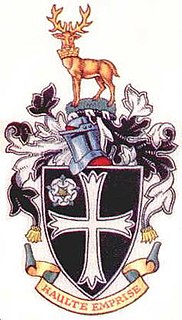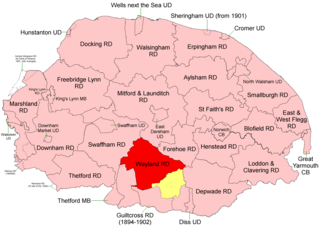Derwent was a rural district in the East Riding of Yorkshire from 1935 to 1974. [1]
Rural districts were a type of local government area – now superseded – established at the end of the 19th century in England, Wales, and Ireland for the administration of predominantly rural areas at a level lower than that of the administrative counties.

The East Riding of Yorkshire, or simply East Riding, is an area in Northern England and can refer either to the administrative county of the East Riding of Yorkshire which is a unitary authority, to the ceremonial county (Lieutenancy) of the East Riding of Yorkshire or to the easternmost of the three subdivisions (ridings) of the traditional county of Yorkshire.
It was created under a County Review Order in 1935, from most of the Escrick Rural District and the Riccal Rural District, and part of the Howden Rural District. [1]

The Local Government Act 1929 was an Act of the Parliament of the United Kingdom that made changes to the Poor Law and local government in England and Wales.
Escrick was a rural district in the East Riding of Yorkshire from 1894 to 1935.
Riccal was a rural district in the East Riding of Yorkshire, England from 1894 to 1935.
It was abolished in 1974 under the Local Government Act 1972, going on to form part of the district of Selby of North Yorkshire. Several parishes in the area were transferred from Selby to the City of York in 1996.

The Local Government Act 1972 is an Act of the Parliament of the United Kingdom that reformed local government in England and Wales on 1 April 1974.

North Yorkshire is a non-metropolitan county and largest ceremonial county in England. It is located primarily in the region of Yorkshire and the Humber but partly in the region of North East England. The estimated population of North Yorkshire was 602,300 in mid-2016.





